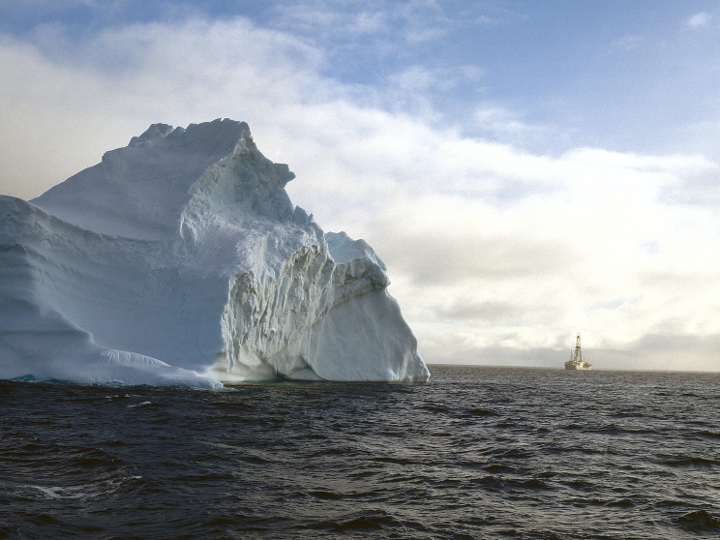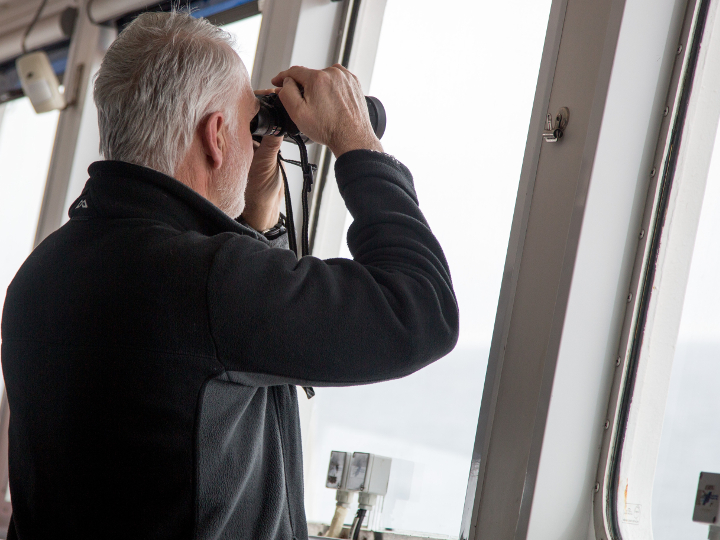

Scientists know the West Antarctic Ice Sheet in the Amundsen Sea could play a pivotal role in future sea level rise, but many questions remain unanswered. An international drilling expedition, led by researchers from the University of Houston and the Alfred Wegener Institute for Polar and Marine Research, will provide important clues through a detailed analysis of the ice sheet’s history.
The International Ocean Discovery Program Expedition 379 will leave Punta Arenas, Chile, for a two-month trip to Antarctica on Jan. 24. It is funded by the National Science Foundation and its international partners.
Julia Wellner, assistant professor of sedimentology at UH and co-chief scientist for the voyage, said this will be the first time the JOIDES Resolution, a scientific drill ship, has been to the Amundsen Sea off the west coast of Antarctica. Karsten Gohl, senior scientist at the Wegener Institute in Bremerhaven, Germany, is the other co-chief scientist.
Delaney Robinson, a PhD student in the UH Department of Earth and Atmospheric Sciences, will serve as a shipboard sedimentologist. In all, about 30 researchers will make the trip, representing 25 universities from the United States, Europe, Japan, China, Korea, India and New Zealand.
“The West Antarctic ice sheet is extremely sensitive to changes in climate,” said James Allan, a program officer in NSF’s Division of Ocean Sciences, which funded the research. “It has the potential to disintegrate, raising global sea level by 11 to 14 feet or more. This expedition will study the history of the ice sheet over millions of years to document the past interplay between seawater and air temperature and how that led to ice gain or loss, offering insights into possible future behavior.”
It will be Wellner’s 10th trip to the southernmost continent but only her second trip to the Amundsen Sea, which is among the most isolated spots on earth. She said the marine-based ice in West Antarctica is critical to understanding how a warming planet will affect sea level rise because it is less stable than terrestrial ice, melting from below as the seawater warms.
The West Antarctic Ice Sheet currently represents the largest ice loss in Antarctica, and scientists say if it were to completely melt, global sea levels could rise as much as 4.3 meters, or about 14 feet.
Wellner and other sedimentary geologists don’t make projections about future sea level rise but instead collect and study sedimentary cores that allow them to determine how the ice sheet has behaved in the past. This expedition will reconstruct the glacial history of the ice sheet over the last tens of millions of years.
“We don’t make projections, but the people who do make them need to understand what happened in the past,” Wellner said.
The ship will drill deep into the sea floor, retrieving cores that are hundreds of meters long, a record of geologic change over millions of years.
Sedimentologists, including Robinson, will study the cores to determine how the various layers were deposited. Other scientists on board will establish dates and physical properties for the deposits. It will be Robinson’s first trip to Antarctica.
Wellner is also principal investigator on a second international project in early 2019, this one to study the Thwaites Glacier in Antarctica, funded by the NSF and the Natural Environment Research Council in the United Kingdom. UH PhD student Rachel Clark will make that voyage, as Wellner oversees the work while on the IODP project.